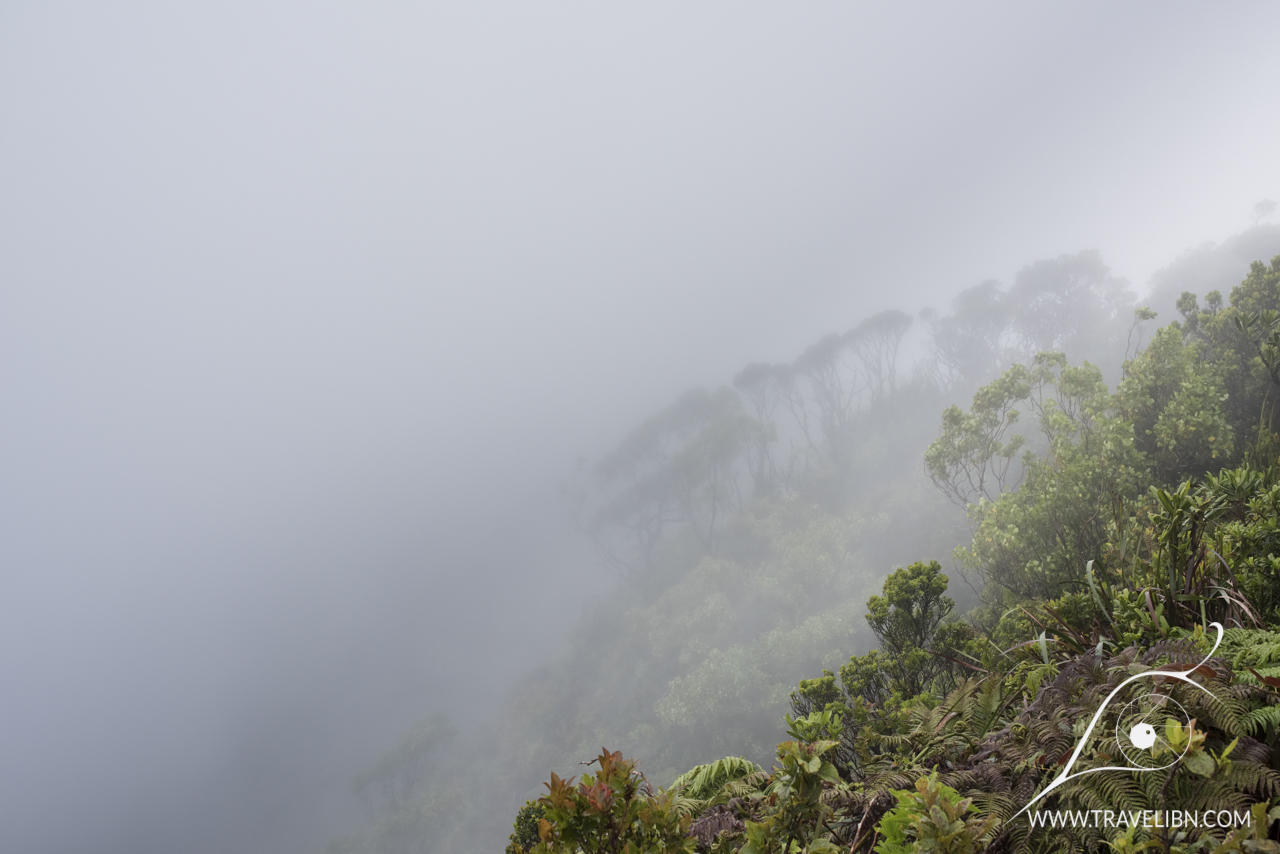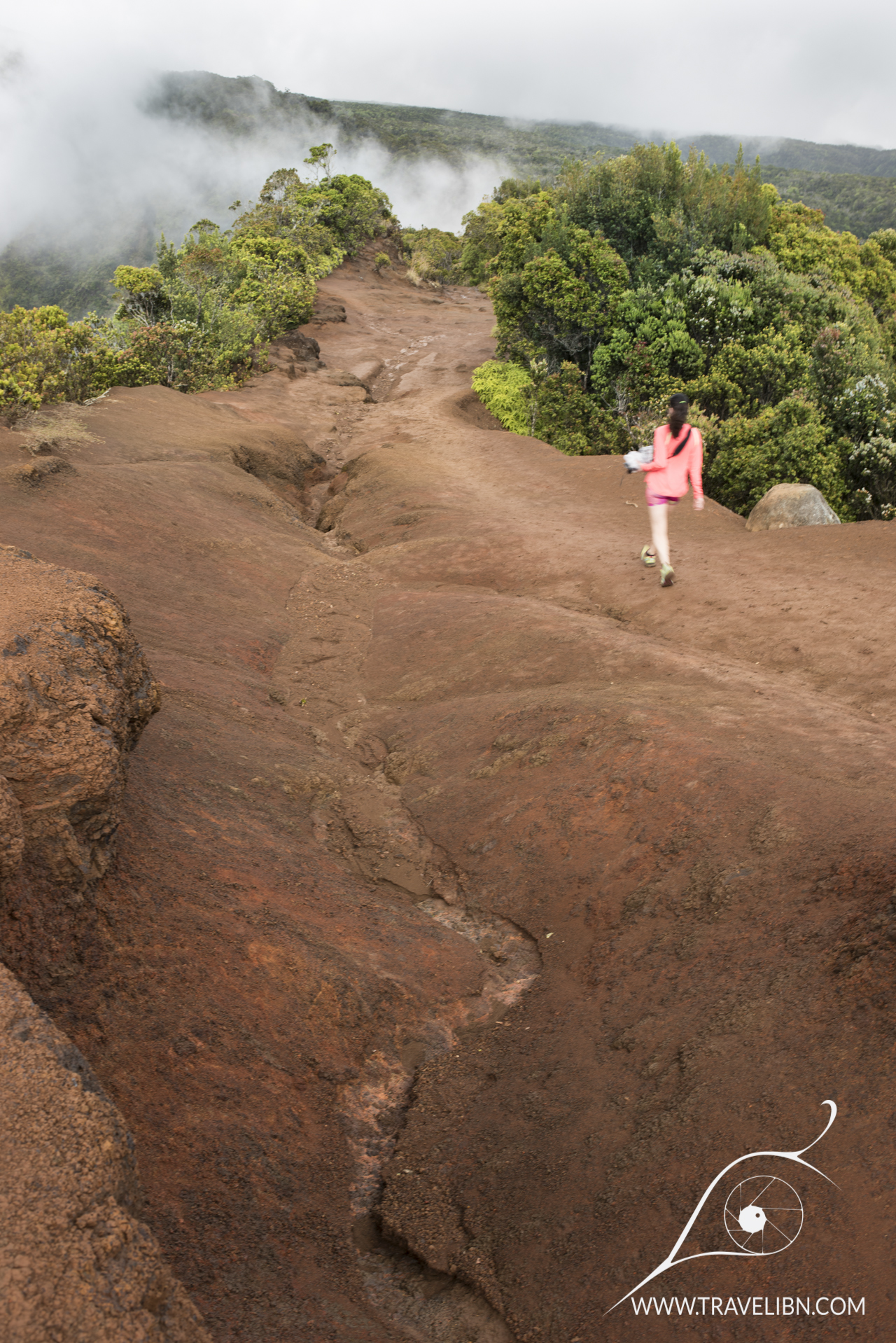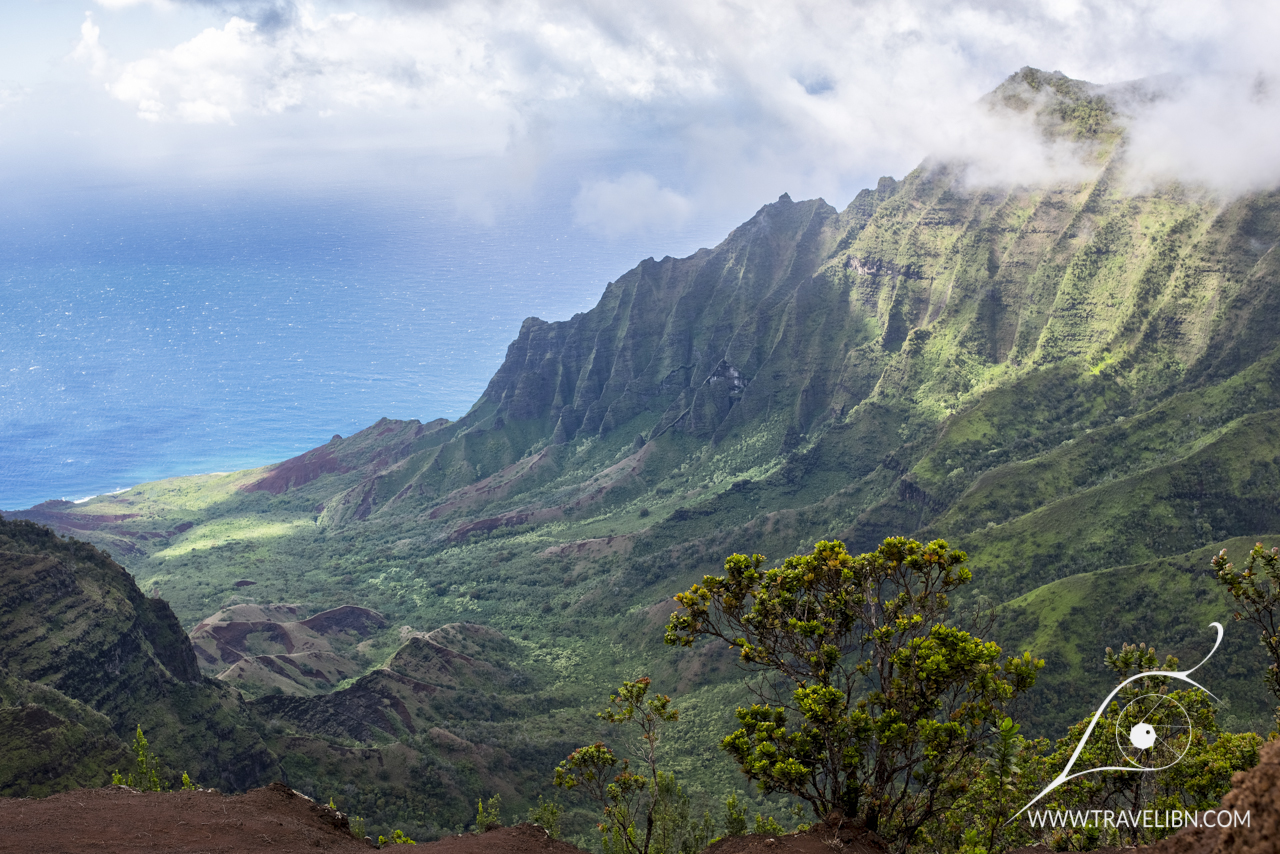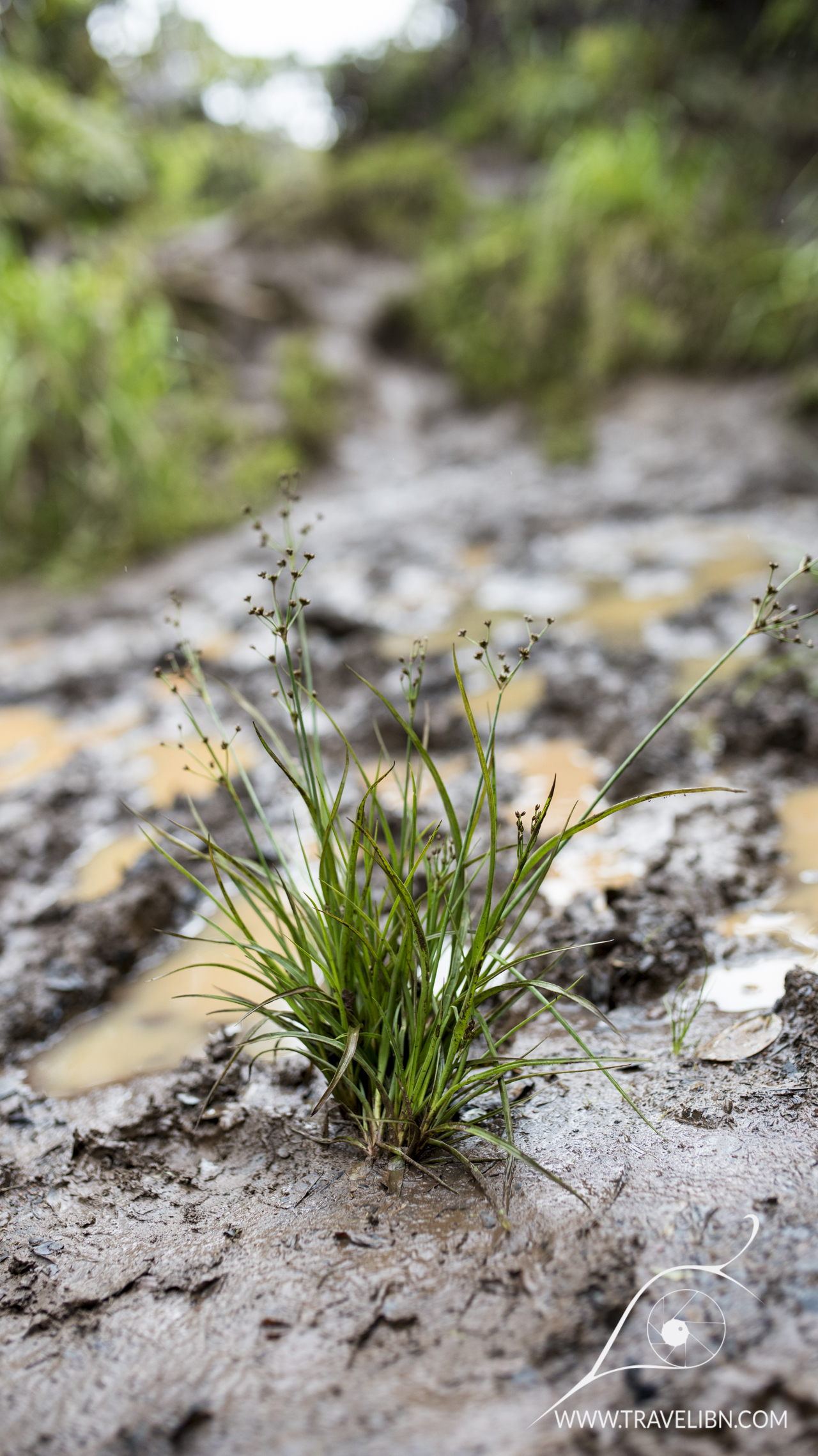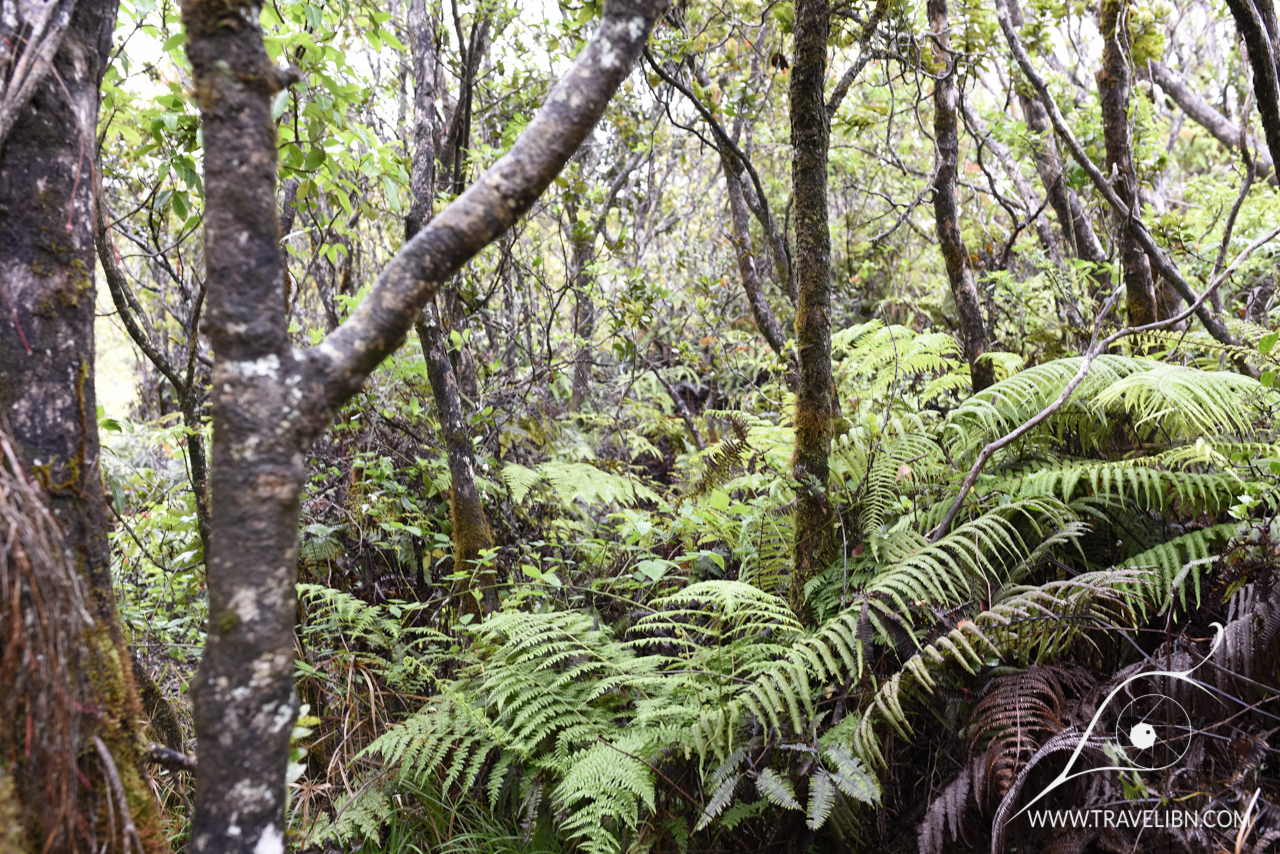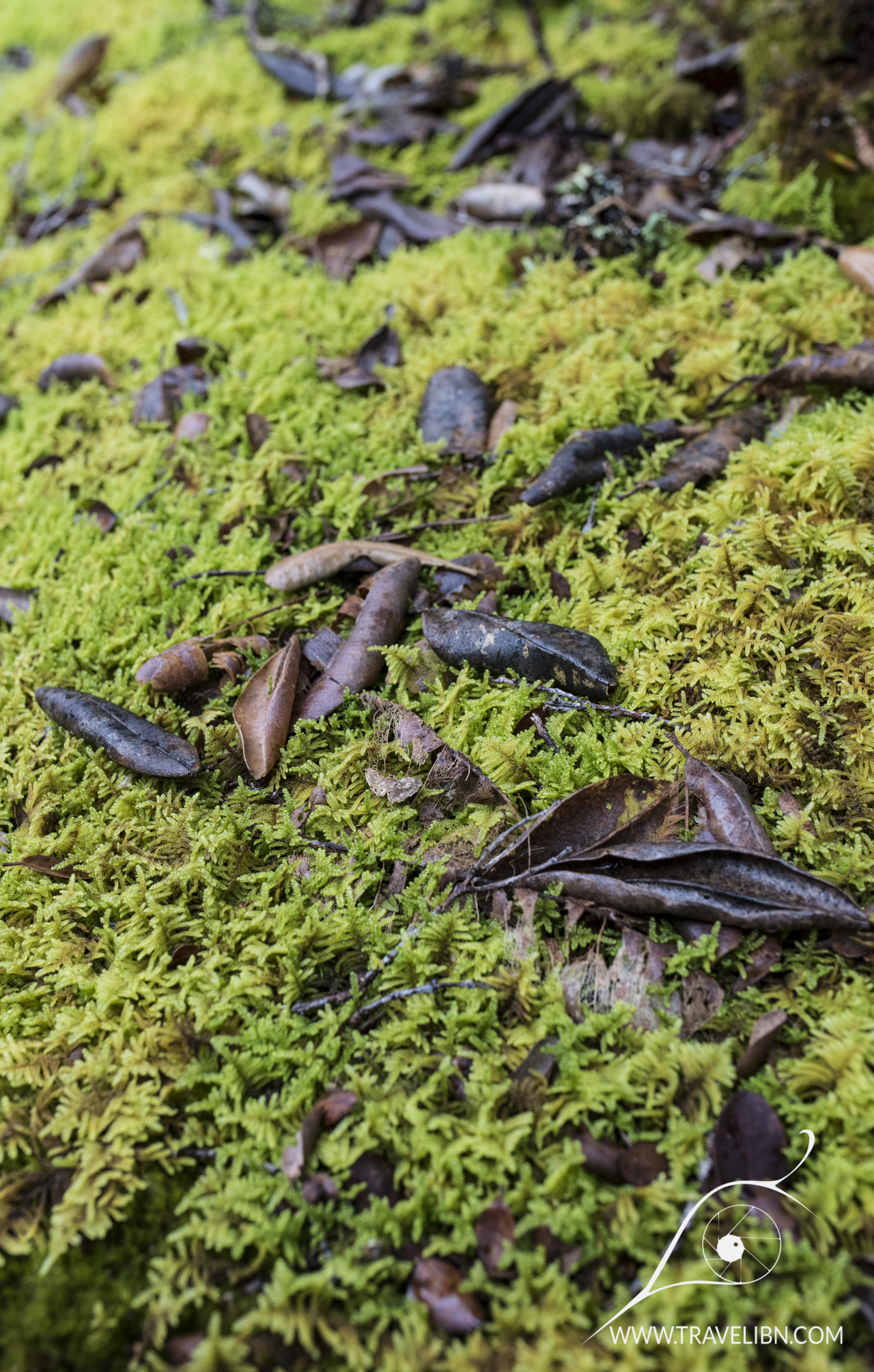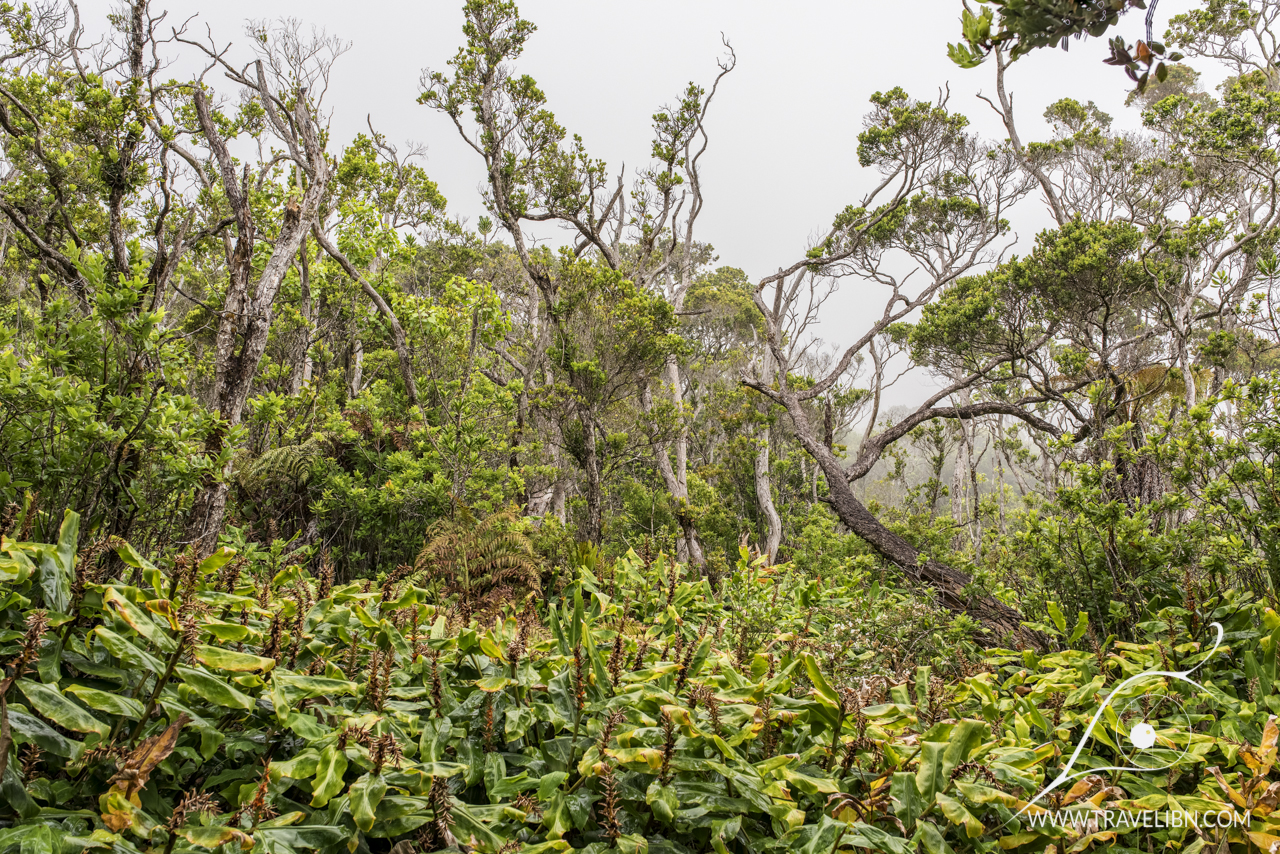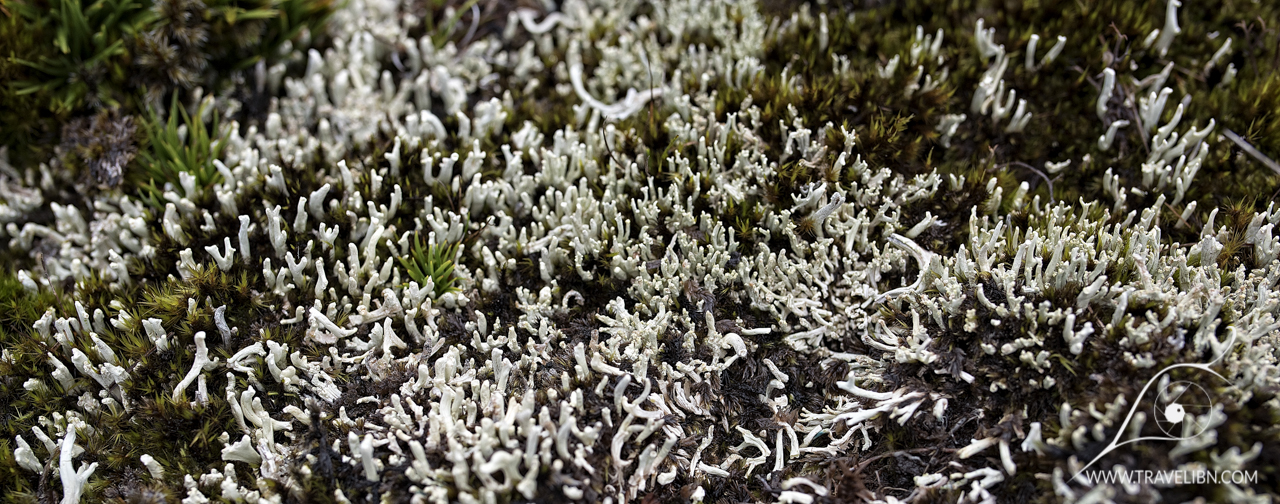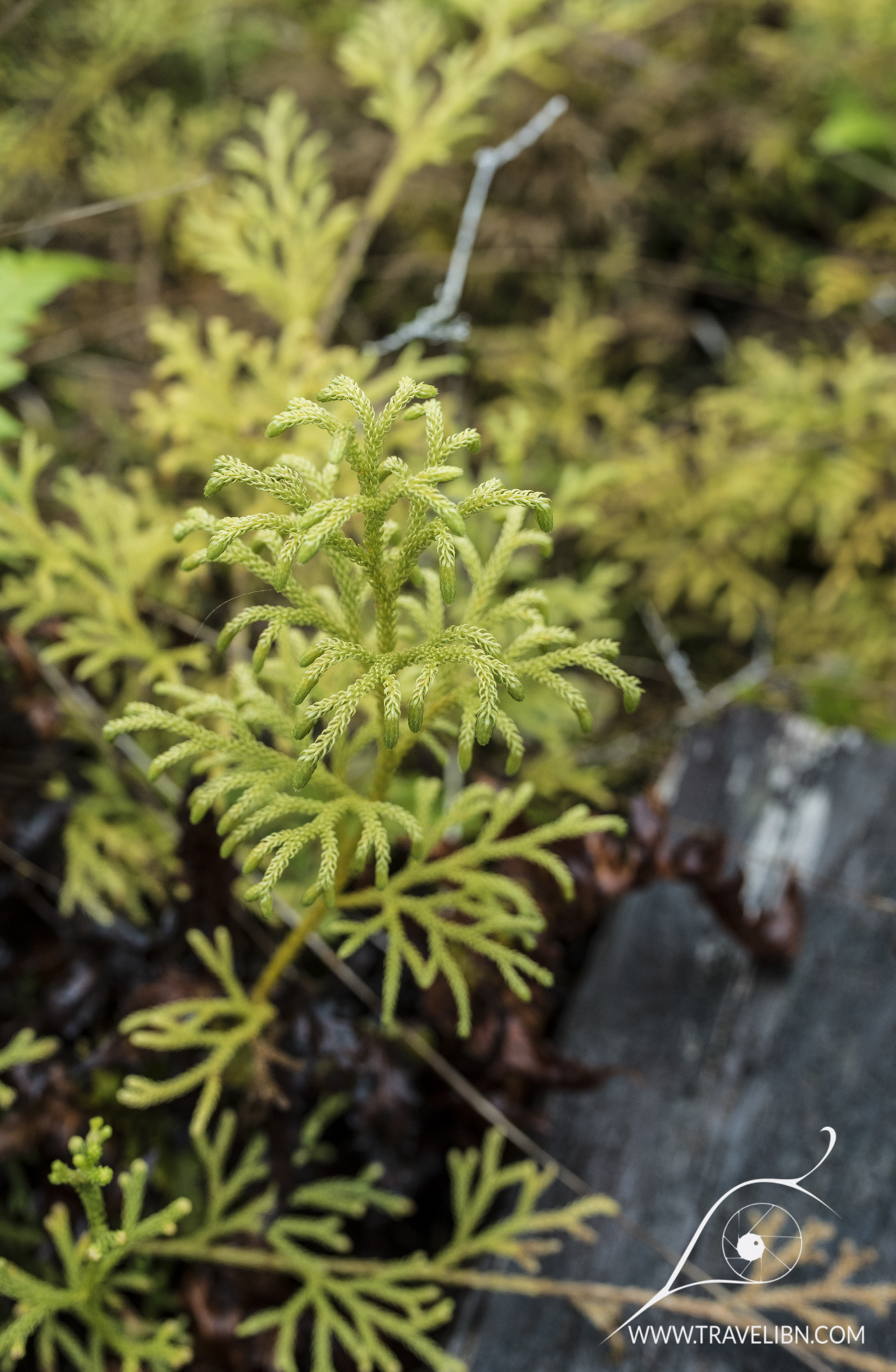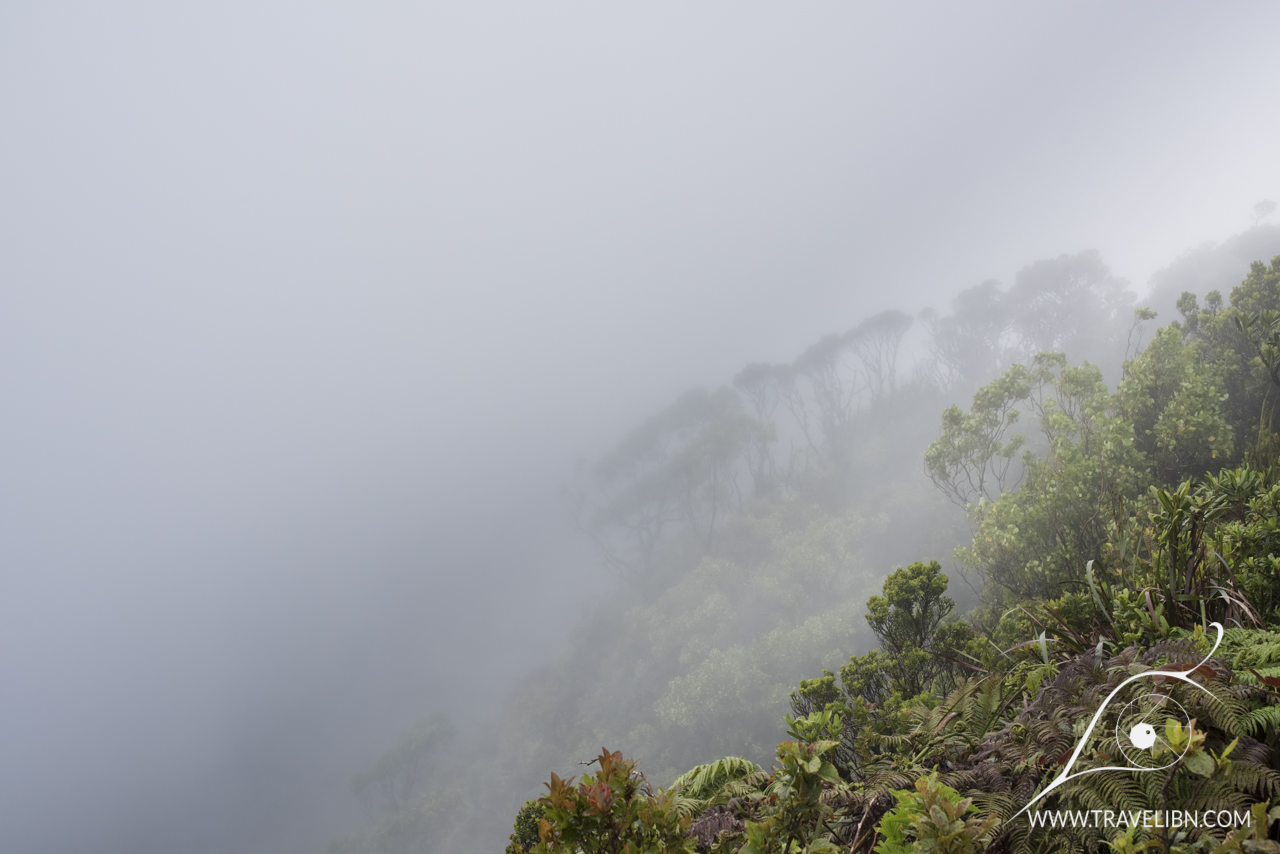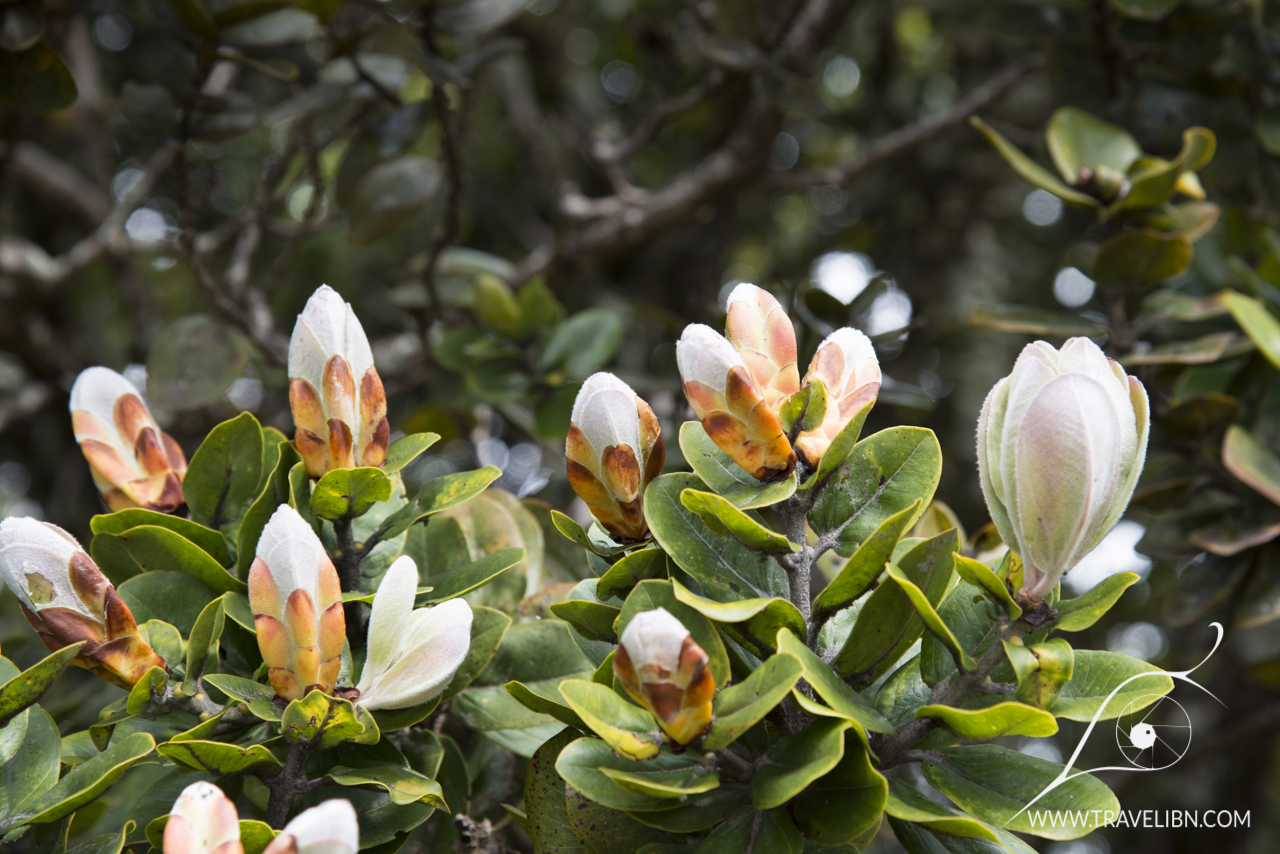Alaka'i Swamp Hike
Pihea Trail &Alaka'i Swamp Trail to Kilohana Lookout
In the northwestern part of Kaua’i, between the weathered walls of Waimea Canyon, the slopes of Mount Wai'ale'ale, the sheer cliffs of the Na Pali coast and the Pacific Ocean, lays a geological oddity that seems almost out of place for a tropical island this size- a high altitude, alpine bog and wet montane forest known as Alaka’i Swamp. The unique topography, a micro-climate unseen on any other Hawaiians islands and the dominance of native fauna &flora make this place worth seeing.
Alaka’i swamp lays within Alaka’i Wilderness Preserve and consists of two related ecosystems- a montane rain forest and an alpine bog. The existence of such unique twin ecosystems is tied to volcanic processes that created all of Kaua’i and the resulting geological features that followed. Alaka'I Swamp is a very wet and windy place, all related to it's proximity to Kaua'i "rain making machine" known as Mount Wai'ale'ale, one of the wettest spots on the planet and a driving force for all of Kaua'i natural beauty. To understand why Mount Wai'ale'ale is of such importance to the island overall climate, we need to look closer at where all that moisture comes from.
The answer to that question lays in Northeast Trade Winds that constantly blow from the Northeast, creating a weather system that's predominant feature on Kaua'i. The process that affects these trade winds to form rain clouds when they come across the island's topography is called orographic lifting. As the wind blow from the windward (east and northeast) direction, it carries a warm,moist air from the open ocean towards the interior of the island. As it rises with changing elevation, it cools down, forming cumulus clouds that at this stage produce some rain and get pushed towards the southwestern part of the island. If Kaua'i was shaped like a shield volcano, with gentle slopes and gradual increase in elevation, this process would probably produce even amount of rainfall throughout its terrain, although it's not the case here. The trade wind driven air, as it travels across the island, comes across an impassable barrier- the eastern flank of Mt. Wai'ale'ale, an almost vertical (3200 ft or 975 m of vertical rise in less than 1/2 mile or 0.8km), forcing it up to an elevation reaching 5000 ft (1500 m). The sudden drop in temperature creates rain clouds that dump incredible amount of rain on Mt Wai'ale'ale (the average annual rainfall at the summit area is 423 inches (1074 cm)! The vast volume of this rain water drain slowly across the mountain's western flank called Olokele Plateau, where Alaka'I Swamp is located. The same trade wind that carries these unimaginable amount of moisture is now dry past the Koke'e State Park area, creating the semi arid conditions in parts of Na Pali Coast and the entire southwestern side of Kaua'i.
It's unbelievable to wrap your head around of all the interconnected factors that play role in the existence of Alaka'i Swamp, nevertheless it's unusual beauty is unquestionable.
ACCES TO ALAKA’I SWAMP
The fact there’s a path permitting access to such an otherworldly place as Alaka’i Swamp carries a bit of history that needs to be mentioned. Prior to re-colonization by Westerners, the swamp was a dangerous place to wander and only experienced Hawaiian guides paid it visits. For a long time, it was a dominion of boar hunters and pioneers. That all changed in 1871, when Queen Emma, one of Hawaiian Islands most influential rulers, rode on a horseback through Alaka’i, accompanied by her servants who cleared the path for her. That spurred a new era of discovery, hardcore botanists and biologists flocked to the swamp in search of new species to be annexed. There still was no permanent road through the swamp, therefore exploring it involved a venture through rain and mud, often in a zero visibility from the ever present, thick fog.
Alaka’i seen a wave of new explorers when U.S. Army decided to run a telephone line to connect the northern part of the island with Waimea after the Japanese attack on Pearl Harbor. You can still find remnants of this effort in form of rotten stumps of wooden telephone lines still standing along the trail.
In the next 40 years, there were attempts to build a road through Alaka’i, all of them ended as failure due to the extreme climate in this part of the island. The idea of building a highway through the swamp was finally abandoned and in 1991, a wooden boardwalk and stairs was erected for foot traffic. It still serves as a way connecting hikers visiting Koke’e State Park with this alien landscape. When you walk on the boardwalk, it’s hard not to think of a hardship the workers who built it must went through.
HOW TO GET THERE
Alaka’i Swamp is located within Koke’e State Park, from which the trail starts. It’s actually two trails combined into one lengthy hike- first section is on Pihea Trail, which then intersects with Alaka’i Swamp trail. The trailhead to Pihea trail starts few feet from Pu’u O Kila Lookout parking lot at the end of Highway 550. Alternatively, the other end of Alaka’i Swamp trail begins off of Mohihi- Camp 10 Road, however you need a 4x4 vehicle to access it and frankly, views from Pihea Trail are hard to beat. I suggest doing the trail as in my description, unless you want to have some off road fun.
PRECAUTIONS
All trails in Kaua’i can be slippery and muddy, but with Pihea- Alaka’i Swamp trails it’s almost a certainty. It rains frequently in all of Koke’e State Park, while Alaka’i Swamp, fed by a rain and stream water from Mt. Waiale’ale, is covered in clouds most of the time. The very lucky few who enjoyed clear skies while hiking to Kilohana Lookout are... well, indeed lucky, as most hikers get wet somewhere on the trail. For that reason, anyone attempting to do this hike need to be prepared for periods of heavy rain and muddy puddles on parts of the trail. Wear shoes you don’t mind getting wet and dirty, bring a rain jacket or poncho and keep your camera with a rain cover on at all times. Other hazards include steep, slippery ridges and boardwalk with missing or unstable planks, therefore watch your step and use hiking sticks if possible. Moreover, keep in mind that Olokele Plateau lays at higher elevation, therefore it is usually much cooler here than in other parts of the island.
TRAIL DESCRIPTION
Pihea& Alaka’i Swamp trails combined make up for a 4 miles (6.4 km, each way) out and back hike that ends with majestic (weather permitting) Kilohana Lookout, overlooking Wainiha Valley and Hanalei Bay. The entire hike is filled with amazing scenery that changes drastically as you push forward. First leg, from the Pihea Trail head to the intersection with Alaka’i Swamp Trail, offers gorgeous views of Kalalau Valley 4000 feet (1200 m) below. For folks not planning to do the entire hike, it’s worth to ditch the crowds at Pu’u O Kila Lookout and wander a mile or so into Pihea Trail and enjoy equally majestic views of Kalalau in solitude. Pihea Trail follows the ridge to a highest point called Pihea Vista at 4284 ft (1306 m) above sea level. The endpoint is actually a little fork in the road, where you have to keep left and follow a pig fence uphill until tere's no further access. You can find an 1927 US Coast and Geodetic Survey benchmark cemented to the ground at the endpoint of this trail.
From here, you can either go back to where you came from or continue to your left towards the intersection with Alaka’i Swamp Trail. It’s worth mentioning at this point that Pihea Trail is a muddy, slippery trek and there’s a big chance you will look like a pig playing in mud after hiking it
Few hundred feet after the earlier mentioned fork in the road, you’ll encounter wooden stairs and platform that continues for the better part of the rest of trail. The scenery changes too as you enter the montane wet forest of Alaka’i Wilderness Preserve. The flora growing here is unique to this part of Kaua’i and a true marvel for nature lovers. Giant ferns, Kolea trees blanketed in lichens make up for an unforgettable experience. The path continues downhill on wooden platforms for another 0.5 mile (0.8 km) or so, until you reach another intersection with Pihea Trail’s other leg. There are sign clearly marking which way goes where- the two trails on the right hand side will take you to either the Alaka’i Swamp or Pihea trail heads located along Mohihi- Camp 10 Road. To continue to Kilohana Lookout, continue on the Alaka’i Swamp trail on the left-hand side.
Next 0.5 mile is a constant downhill boardwalk hike until you reach Kawaikoi Stream Crossing. Crossing it may be impossible in times of heavy rain, therefore be careful and if in doubt, turn back. Alaka’i Swamp is covered in thick fog most of the times, making helicopter rescues impossible to execute.
Right after crossing Kawaikoi Stream, the trail picks up for one final, quite challenging ascend. Gone are wooden stairs, there are only uprooted trees and exposed rocks to hold onto when climbing this section. A good pair of trail runners and a hiking sticks are of much help . The ascend, while short, is steep and slippery, so come prepared.
At the top of the ridge, boardwalk starts again and continues to the end of the trail. It would be very hard to continue without it and we stood in absolute awe for the people who built it, as it must have been an extremely difficult task. As you reach the high point of Alaka’i Swamp Trail, the path levels and there’s little to none elevation change from here to Kilohana Vista.
An alien, blanketed in thick fog landscape awaits at the top of the ledge. Dominated by low lying shrubs, semi aquatic bog plants, you will find yourself standing on the Alaka’i Swamp montane bog ecosystem flourishing on a geological formation known as Olokele Plateau (or Alaka’i Plateau).
The beauty of this otherworldly place lays in its specific weather, plants that can’t be find anywhere else in the archipelago and native birds adapted to such harsh climate. The fog is ever- present, adding another layer of uniqueness to the area. The trail follows a narrow wooden platform, with soaked in rainwater ground plants on both sides. The air is cool and moist, the wind strong and unpredictable. Fog rolls in and out, limiting the visibility to not more than a foot in front of one’s eyes. The very last fragment of the trail descents back to a rain forest, ending suddenly with a little picnic area- the Kilohana Lookout. What you would see from that lookout depends sorely on being in the right moment, as the weather does not cooperate here, ever...
THE HIKE
Pihea & Alaka’i Swamp trails is a true gem in Kaua’i extensive trail system. It’s one of these hikes where, no matter how much you read about and how many pictures you see, you will be surprised, amazed even when you hike it yourself. Alaka’i Swamp is one of the unique ecosystems that make Hawaiian Islands like no other place in the world. We felt the same seeing lava lake atop Kilauea Crater in Volcanoes National Park in Hawai’i, or a sunrise in Haleakala NP- nature works in such an unpredictable way, creating these diverse landscapes complete with their own weather systems.
In retrospective, Alaka’i Swamp trail was the most astonishing hike we did in Kaua’i, in a way that we did not expect this area to be so different from the rest of the island’s natural wonders. On top of that, it was the “dirtiest” of all hikes (in a good way), we felt like kids playing in mud as we managed our way through the trail’s many obstacles. If that wasn’t enough, the always changing scenery makes it even more worth-doing. You start with numerous Kalalau Valley vistas as you follow the ridge line, then wander into a rain forest overgrown with giant ferns, water soaked moss and other native flora, finally ending up in an alien landscape where the island’s most vulnerable species thrive in isolation from invasive plants and animals that threaten the rest of Kaua’i. Final reward awaits at the trail end- Kilohana Vista, with a little bit of luck and patience, offer a fantastic view of the northern part of the island. Even if you are out of luck and the weather won’t clear up (as happened to us), standing on an edge of Valley's ridge with invisible bottom, where cool, moist air is racing uphill in a cover of clouds, it is an unforgettable experience. We’ve never seen a scene where everything in front of our eyes was just pure white nothingness.
If you have time for one more hike during your vacation, make it Alaka’i Swamp trail. We promise you leave satisfied...

